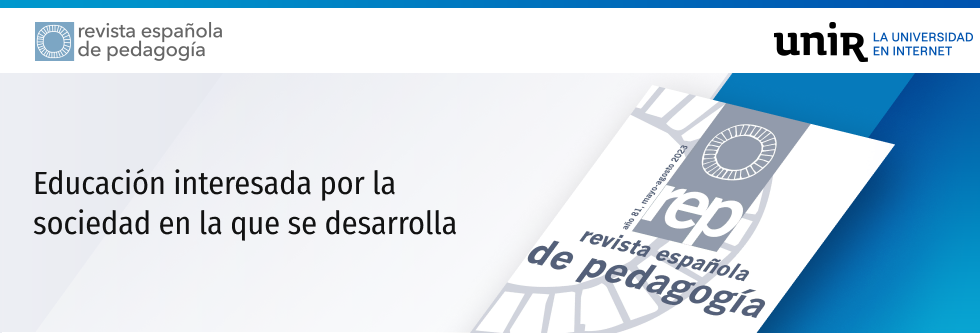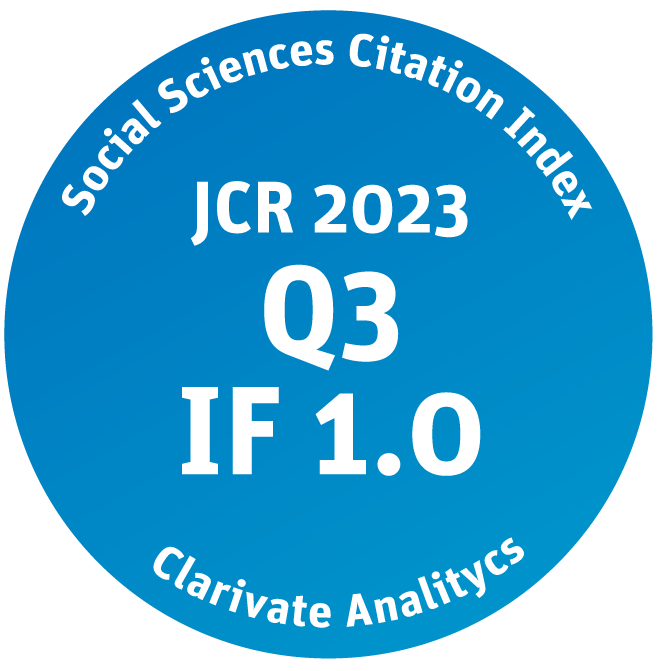Música binaural y logro educativo: evidencia con datos longitudinales y cuasiexperimentales
DOI
10.22550/2174-0909.4164
Abstract
This article investigates the impact of background binaural music on educational attainment within the context of a natural experiment. In a university business school, 73 undergraduate students participated in this study, providing a maximum of 707 observations at 16 points in time. The students were divided into three groups (Microeconomics A and B, and International Economics) and were further categorized into control and experimental groups at different stages of the courses. All students attended classes from January to June 2021, with the addition of binaural music as a treatment in either the first or second part of the courses (divided into three parts). After each lecture, students completed a multiple-choice quiz designed to assess their learning during the lecture. Utilizing t-tests for mean comparisons and panel data econometric techniques, the study found that the scores of the experimental groups were significantly higher than those of the control groups. Overall, binaural music was observed to increase quiz scores by 8 to 20 basis points.
Referencias | References
Albar, S. B., & Southcott, J. E. (2021). Problem and project-based learning through an investigation lesson: Significant gains in creative thinking behaviour within the Australian foundation (preparatory) classroom. Thinking Skills and Creativity, 41, 100853. https://doi.org/10.1016/j.tsc.2021.100853
Algailani, U. F., Tigabu, B. M., Rahim, Y. R., Alzbeede, A. A., & Alshaikhli, L. O. (2023). The impact of music on stress reduction and academic performance of dental students. Cureus, 15 (10), e46554. https://doi.org/10.7759/cureus.46554
Antony, M., Priya, V. V., & Gayathri, R. (2018). Effect of music on academic performance of college students. Drug Invention Today, 10 (10), 2093-2096.
Bae, J., Yoo, S., Kim, H., Kim, Y., Kim, J.-T., Lim, Y.-J., & Kim, H.-S. (2023). Effect of real-time binaural music on sedation with dexmedetomidine during spinal anesthesia: A triple-arm, assessor-blind, randomized controlled trial. Journal of Clinical Anesthesia, 84, 110997. https://doi.org/10.1016/j.jclinane.2022.110997
Baker, D., Hallam, S., & Rogers, K. (2023). Does learning to play an instrument have an impact on change in attainment from age 11 to 16? British Journal of Music Education, 40 (3), 297-310. https://doi.org/10.1017/S0265051723000116
Beauvais, C. (2015). The ‘Mozart effect’: A sociological reappraisal. Cultural Sociology, 9 (2), 185-202. https://doi.org/10.1177/1749975514557096
Blasco-Magraner, J. S., Marín-Liébana, P., & Botella-Nicolás, A. M. (2022). Efectos de la educación musical en el desarrollo emocional de adolescentes entre 10 y 18 años. Una revisión sistemática [Effects of the educational use of music on 10-to-18-year-old adolescents’ emotional development. A systematic review]. Música Hodie, 22, e68847. https://doi.org/10.5216/mh.v22.68847
Bradbury, N. A. (2016). Attention span during lectures: 8 seconds, 10 minutes, or more? Advances in Physiology Education, 40 (4), 509-513. https://doi.org/10.1152/advan.00109.2016
Brazhnikova, Y. A. (2016). Innovative technique of working with music text by symmetry operations. Integration of Education, 20 (4), 507-521. https://doi.org/10.15507/1991-9468.085.020.201604.507-521
Briscoe, J. R., Daugherty, C. D., Terui, S., & Goldsmith, J. V. (2022). Theory in praxis: Using the modified version of the Social Network Strategy (mSNS) as a pedagogical tool for understanding. Communication Teacher, 36 (4), 281-288. https://doi.org/10.1080/17404622.2022.2035420
Burnard, P., & Younker, B. A. (2004). Problem solving and creativity: Insights from students’ individual composing pathways. International Journal of Music Education, 22 (1), 59-76. https://doi.org/10.1177/0255761404042375
Castillo-Montoya, M. (2019). Professors’ pedagogical strategies for teaching through diversity. The Review of Higher Education, 42 (5), 199-226. https://doi.org/10.1353/rhe.2019.0050
Cheah, Y., Wong, H. K., Spitzer, M., & Coutinho, E. (2022). Background music and cognitive task performance: A systematic review of task, music, and population impact. Music y Science, 5, 1-44. https://doi.org/10.1177/20592043221134392
Dosseville, F., Laborde, S., & Scelles, N. (2012). Music during lectures: Will students learn better? Learning and Individual Differences, 22 (2), 258-262. https://doi.org/10.1016/j. lindif.2011.10.004
Filimon, R. C. (2010). Beneficial subliminal music: Binaural beats, hemi-sync and metamusic. In V. Munteanu, R. Raducanu, G. Dutica, A, Croitoru, & V. E. Balas (Eds.), Recent Advances in Acoustics & Music. Proceedings of the 11th WSEAS International Conference on Acoustics and Music: Theory and Applications (AMTA ’10) (pp. 103- 108). WSEAS Press. http://wseas.us/e-library/conferences/2010/Iasi/AMTA/AMTA-18.pdf
Garcia-Argibay, M., Santed, M. A., & Reales, J. M. (2019). Efficacy of binaural auditory beats in cognition, anxiety, and pain perception: A meta-analysis. Psychological Research, 83 (2), 357-372. https://doi.org/10.1007/s00426-018-1066-8
Gershon, W. S., & Ben-Horin, O. (2014). Deepening inquiry: What processes of making music can teach us about creativity and ontology for inquiry based science education. International Journal of Education y the Arts, 15 (19), 38.
Gillanders, C., & Casal De La Fuente, L. (2020). Enhancing mathematical thinking in early childhood through music. Pedagogies, 15 (1), 60-79. https://doi.org/10.1080/155448 0X.2019.1673167
Guhn, M., Emerson, S. D., & Gouzouasis, P. (2019). A population-level analysis of associations between school music participation and academic achievement. Journal of Educational Psychology, 112 (2), 308-328. https://doi.org/10.1037/edu0000376
Halawa, S., Hsu, Y.-S., Zhang, W.-X., Kuo, Y.-R., & Wu, J.-Y. (2020). Features and trends of teaching strategies for scientific practices from a review of 2008-2017 articles. International Journal of Science Education, 42 (7), 1183-1206. https://doi.org/10.1080/09500693.2020.1752415
Hallam, S., & Price, J. (1998). Can the use of background music improve the behaviour and academic performance of children with emotional and behavioural difficulties? British Journal of Special Education, 25 (2), 88-91. https://doi.org/10.1111/1467-8527.t01-1-00063
Hickey, P., Barnett-Young, A., Patel, A. D., & Race, E. (2020). Environmental rhythms orchestrate neural activity at multiple stages of processing during memory encoding: Evidence from event-related potentials. PLoS ONE, 15 (11), e0234668. https://doi.org/10.1371/journal.pone.0234668
Holmes, S. (2021). The wider cognitive benefits of engagement with music. In A. Creech, D. A. Hodges, S. Hallam (Eds.), Routledge international handbook of music psychology in education and the community. Routledge.
Ilari, B. (2020). Longitudinal research on music education and child development: Contributions and challenges. Music and Science, 3, 1-21. https://doi.org/10.1177/2059204320937224
Ilari, B., Perez, P., Wood, A., & Habibi, A. (2019). The role of community-based music and sports programmes in parental views of children’s social skills and personality. International Journal of Community Music, 12 (1), 35-56. https://doi.org/10.1386/ijcm.12.1.35_1
Ingendoh, R. M., Posny, E. S., & Heine, A. (2023). Binaural beats to entrain the brain? A systematic review of the effects of binaural beat stimulation on brain oscillatory activity, and the implications for psychological research and intervention. PLOS ONE, 18 (5), e0286023. https://doi.org/10.1371/journal.pone.0286023
Ishiguro, C., Ishihara, T., & Morita, N. (2023). Extracurricular music and visual arts activities are related to academic performance improvement in school-aged children. Npj Science of Learning, 8 (1), 7. https://doi.org/10.1038/s41539-023-00155-0
Jaschke, A. C., Eggermont, L. H. P., Honing, H., & Scherder, E. J. A. (2013). Music education and its effect on intellectual abilities in children: A systematic review. Reviews in the Neurosciences, 24 (6), 665-675. https://doi.org/10.1515/revneu-ro-2013-0023
Keržič, D., Alex, J. K., Pamela Balbontín Alvarado, R., Bezerra, D. da S., Cheraghi, M., Dobrowolska, B., Fagbamigbe, A. F., Faris, M. E., França, T., González-Fernández, B., Gonzalez-Robledo, L. M., Inasius, F., Kar, S. K., Lazányi, K., Lazăr, F., Machin-Mastromatteo, J. D., Marôco, J., Marques, B. P., Mejía-Rodríguez, O., … Aristovnik, A. (2021). Academic student satisfaction and perceived performance in the e-learning environment during the COVID-19 pandemic: Evidence across ten countries. PLOS ONE, 16 (10), e0258807. https://doi.org/10.1371/journal.pone.0258807
Koponen, J. (2019). The flipped classroom approach for teaching cross-cultural communication to millennials. Journal of Teaching in International Business, 30 (2), 102-124. https://doi.org/10.1080/08975930.2019.1663776
Krugman, P. R., Obstfeld, M., & Melitz, M. J. (2018). International economics: Theory and policy (11th ed.). Pearson.
Lee-Harris, G., Timmers, R., Humberstone, N., & Blackburn, D. (2018). Music for relaxation: A comparison across two age groups. Journal of Music Therapy, 55 (4), 439-462. https://doi.org/10.1093/jmt/thy016
McBride, E. E., & Greeson, J. M. (2023). Mindfulness, cognitive functioning, and academic achievement in college students: The mediating role of stress. Current Psychology, 42 (13), 10924-10934. https://doi.org/10.1007/s12144-021-02340-z
Mega, C., Ronconi, L., & De Beni, R. (2014). What makes a good student? How emotions, self-regulated learning, and motivation contribute to academic achievement. Journal of Educational Psychology, 106 (1), 121-131. https://doi.org/10.1037/a0033546
Nantais, K. M., & Schellenberg, E. G. (1999). The Mozart effect: An artifact of preference. Psychological Science, 10 (4), 370-373. https://doi.org/10.1111/1467-9280.00170
Nieto-Escamez, F. A., & Roldán-Tapia, M. D. (2021). Gamification as online teaching strategy during covid-19: A mini-review. Frontiers in Psychology, 12, 648552. https://doi.org/10.3389/fpsyg.2021.648552
Orozco, H. D., Dumas, G., & Lehmann, A. (2020). Binaural beats through the auditory pathway: From brainstem to connectivity patterns. ENeuro, 7 (2), 1-18. https://doi.org/10.1523/ENEURO.0232-19.2020
OpenAI. (2023). ChatGPT (14 March version) [Comprehensive language model]. https://chat.openai.com/chat
Parkin, M. (2019). Microeconomics (13th ed.). Pearson. Pavlyugina, R. A., Karamysheva, N. N., Sakharov, D. S., & Davydov, V. I. (2012). Influence of music on the solution of mathematical logical tasks. Human Physiology, 38 (4), 354-360. https://doi.org/10.1134/S0362119712030097
Pekrun, R., Goetz, T., Titz, W., & Perry, R. P. (2002). Academic emotions in students’ self-regulated learning and achievement: A program of qualitative and quantitative research. Educational Psychologist, 37 (2), 91-105. https://doi.org/10.1207/S15326985EP3702_4
Pelletier, C. L. (2004). The effect of music on de- creasing arousal due to stress: A meta-analy- sis. Journal of Music Therapy, 41 (3), 192-214. https://doi.org/10.1093/jmt/41.3.192
Rahman, J. S., Gedeon, T., Caldwell, S., & Jones, R. (2021). Can binaural beats increase your focus? Exploring the effects of music in participants’ conscious and brain activity responses. Conference on Human Factors in Computing Systems - Proceedings, May, 6. https://doi.org/10.1145/3411763.3451813
Rauscher, F., Shaw, G., & Ky, C. (1993). Music and spatial task performance. Nature, 365, 611. https://doi.org/10.1038/365611a0
Rose, D., Jones, A., & Heaton, P. (2019). Measuring the impact of musical learning on cognitive, behavioural and socio-emotional wellbeing development in children. Psychology of Music, 47 (2), 284-303. https://doi.org/10.1177/0305735617744887
Schroeder, C. M., Scott, T. P., Tolson, H., Huang, T.-Y., & Lee, Y.-H. (2007). A meta-analysis of national research: Effects of teaching strategies on student achievement in science in the United States. Journal of Research in Science Teaching, 44 (10), 1436-1460. https://doi.org/10.1002/tea.20212
Sharma, M., Biros, D., Ayyalasomayajula, S., & Dalal, N. (2020). Teaching programming to the post-millennial generation: Pedagogic considerations for an IS course. Journal of Information Systems Education, 31 (2), 96-105. http://jise.org/Volume31/n2/JISEv31n2p96.html
Sharma, S., Rewadkar, S., Pawar, H., Deokar, V., & Lomte, V. M. (2017). Survey on binaural beats and background music for increased focus and relaxation. In 2017 International Conference on Emerging Trends and Innovation in ICT, (pp. 98-103). IEEE. https://doi.org/10.1109/ETIICT.2017.7977018
Stough, C., Kerkin, B., Bates, T., & Mangan, G. (1994). Music and spatial IQ. Personality and Individual Differences, 17 (5), 695. https://doi.org/10.1016/0191-8869(94)90145-7
Suárez, L., Elangovan, S., & Au, A. (2016). Cross-sectional study on the relationship between music training and working memory in adults. Australian Journal of Psychology, 68 (1), 38-46. https://doi.org/10.1111/ajpy.12087
Thompson, W. F., Schellenberg, E. G., & Husain, G. (2001). Arousal, mood, and the Mozart effect. Psychological Science, 12 (3), 248-251. https://doi.org/10.1111/1467-9280.00345
Waterhouse, L. (2006). Multiple intelligences, the Mozart effect, and emotional intelligence: A critical review. Educational Psychologist, 41 (4), 207-225. https://doi.org/10.1207/s15326985ep4104_1
Wichian, S. N., Klaphajone, J., & Phrompayak, D. (2021). Effects of music embedded with binaural and superimposed beats controlling hypertension in older adults: A quasi experimental study. Pacific Rim International Journal of Nursing Research, 25 (3), 345-358.
Wiwatwongwana, D., Vichitvejpaisal, P., Thaikruea, L., Klaphajone, J., Tantong, A., & Wiwatwong- wana, A. (2016). The effect of music with and without binaural beat audio on operative anxiety in patients undergoing cataract surgery: A randomized controlled trial. Eye (Basingstoke), 30 (11), 1407-1414. https://doi.org/10.1038/eye.2016.160
Ye, L., Posada, A., & Liu, Y. (2019). A review on the relationship between chinese adolescents’ stress and academic achievement. New Directions for Child and Adolescent Development,163, 81-95. https://doi.org/10.1002/cad.20265
Citación recomendada | Recommended citation
Tovar-García, E. D. (2024). Binaural music and educational attainment: Evidence from longitudinal and quasi-experimental data [Música binaural y logro educativo: evidencia con datos longitudinales y cuasiexperimentales]. Revista Española de Pedagogía, 82 (289). https://doi.org/10.22550/2174-0909.4164
Licencia Creative Commons | Creative Commons License
Esta obra está bajo una licencia internacional Creative Commons Atribución-NoComercial 4.0.
This work is licensed under a Creative Commons Attribution-NonCommercial 4.0 International License
Included in
Business Administration, Management, and Operations Commons, Economics Commons, Educational Methods Commons, Education Economics Commons, Experimental Analysis of Behavior Commons, Higher Education Commons, Online and Distance Education Commons
Palabras clave | Keywords
Economics, educational attainment, binaural music, natural experiment, longitudinal studies






